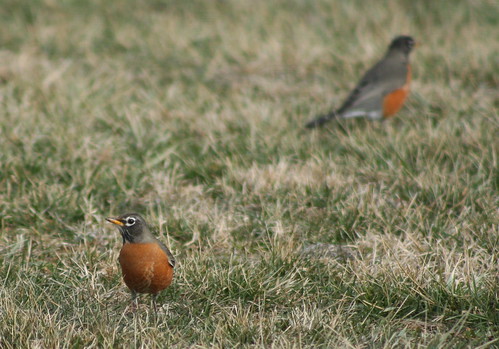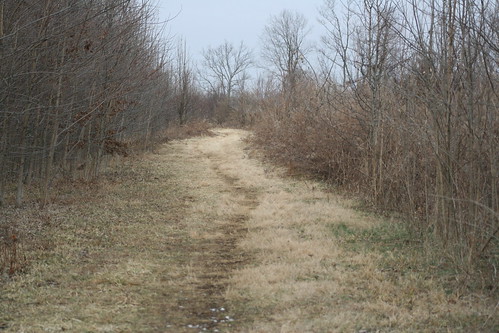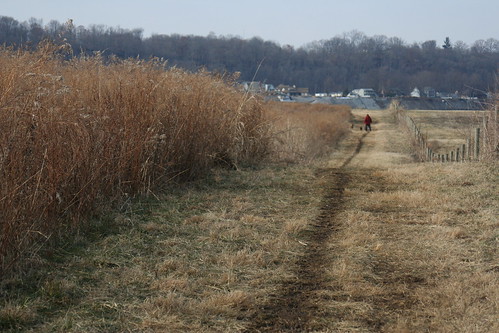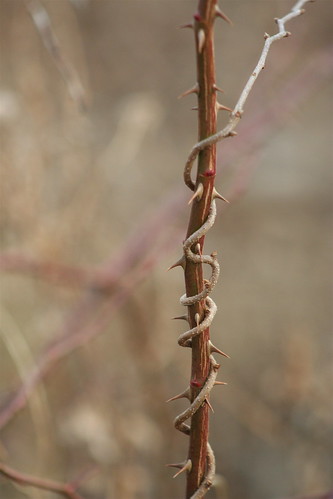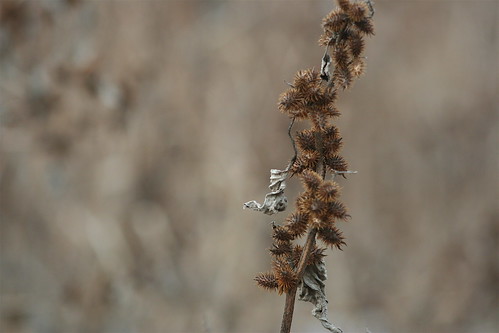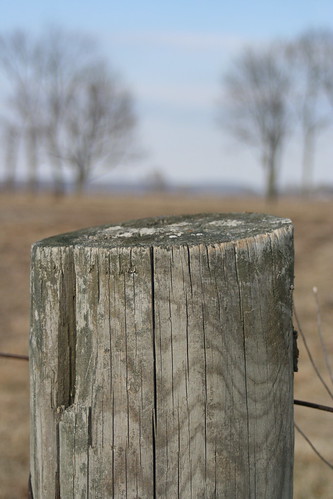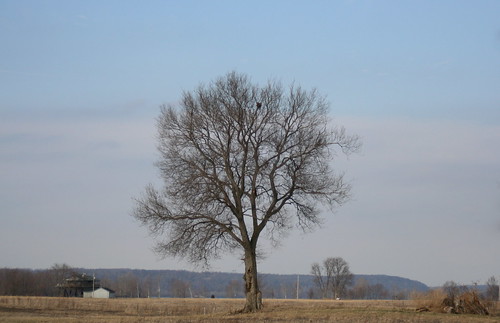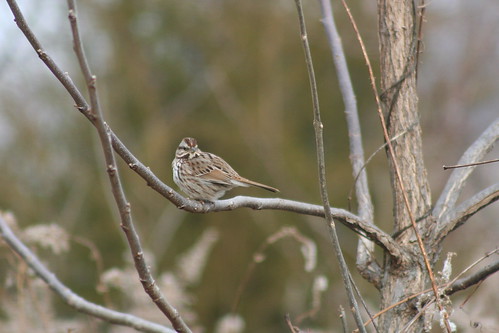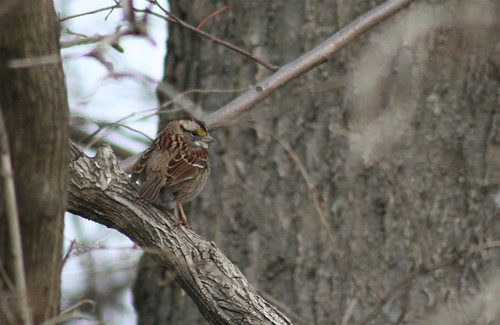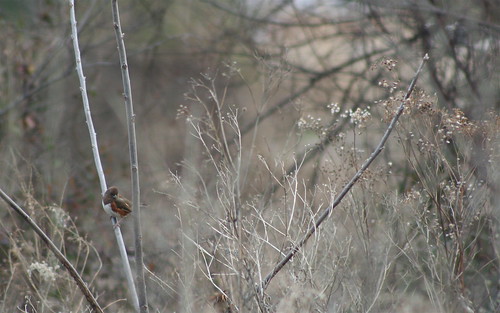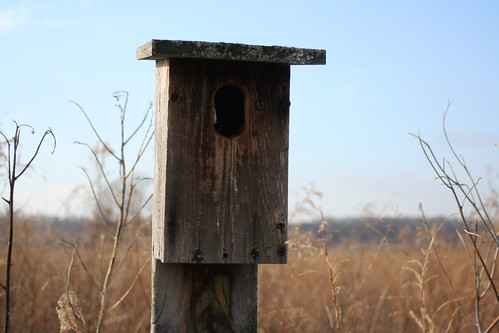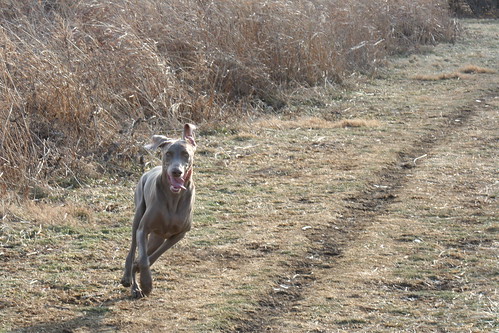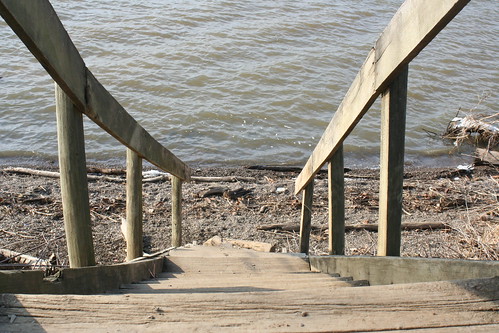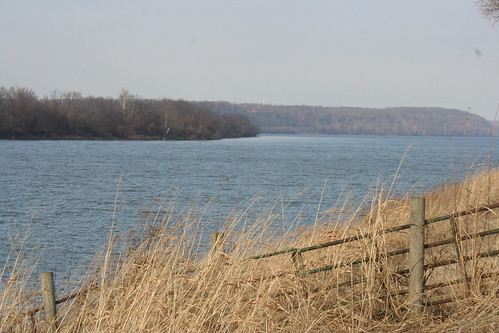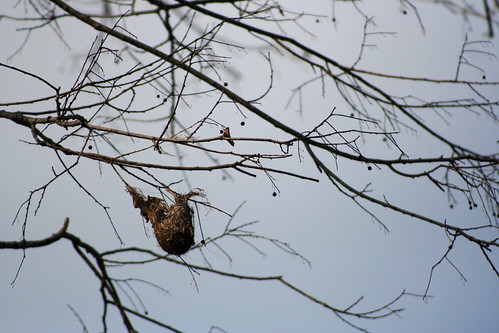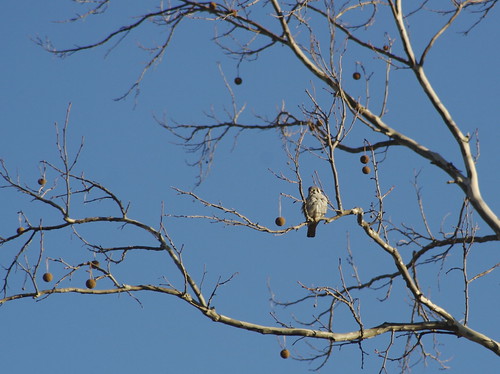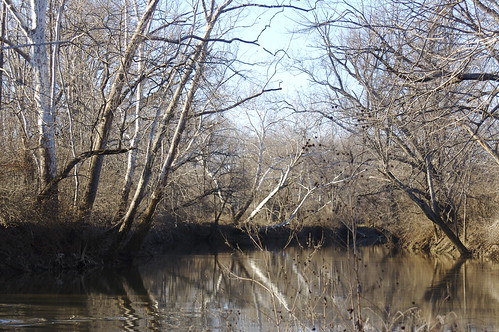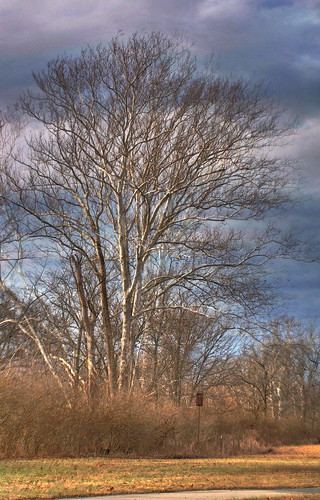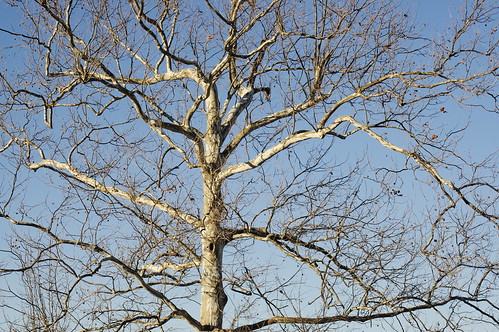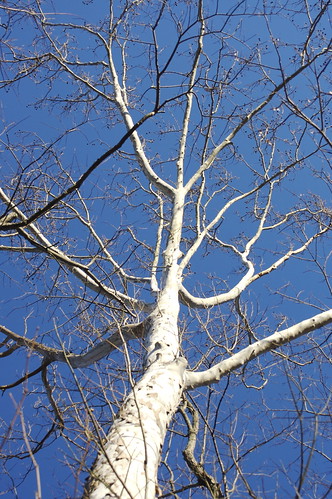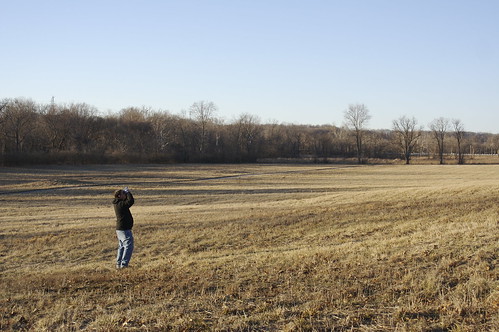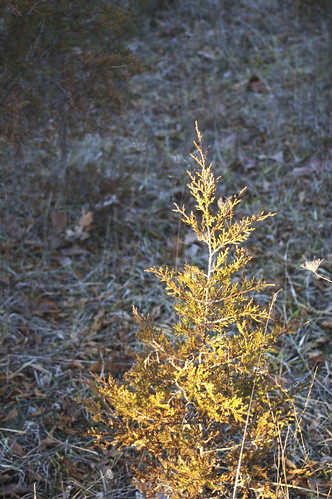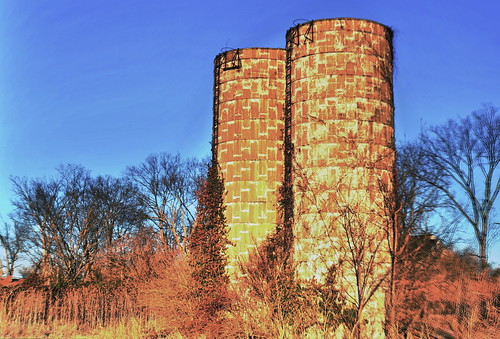My wife and I had the chance to go to Bernheim Forest this morning. There wasn't much snow accumulation at all, which is what I was hoping to get some pictures of. January is kind of boring to photograph without some white stuff on the ground. Below is a satellite view of Bernheim Forest. If you zoom out you can see just how large the place is, over 12,000 acres of research forest and over 30 miles of trails.
So we made it out there around 11:00 AM and there was something resembling snow falling from the sky. It was heavier than snow, kind of icy, and was just as wet as rain. At any rate, our first stop was to my grandfather's memorial bench between the holly trees and the prairie. I make it a point to stop there every time I visit, it's a great spot to take in the prairie. The plaque on the bench reads, "In memory of Lenton C. Hawkinson...May this be a place of meditation, contemplation, and relaxation."
The robins were hitting the holly berries big time. They were the most skittish robins I've ever seen, they flew if I even looked in their direction. The holly trees didn't have the option of being so flighty.
The natural areas were closed so I checked out some spots on the main loop. This moss was the only green thing I saw other than the evergreens. I liked the silos as well, too bad the snow wouldn't show up in the picture.
Finally, we made one last stop at the Ginko trees. I read in the latest Forest Echo (Bernheim's quarterly newsletter) that Bernheim will provide a free one year family membership for a set of photographs taken of the same tree from the same location each month over a single calendar year. I started today with this photograph. I may have to go back and try again when there is snow.
So we made it out there around 11:00 AM and there was something resembling snow falling from the sky. It was heavier than snow, kind of icy, and was just as wet as rain. At any rate, our first stop was to my grandfather's memorial bench between the holly trees and the prairie. I make it a point to stop there every time I visit, it's a great spot to take in the prairie. The plaque on the bench reads, "In memory of Lenton C. Hawkinson...May this be a place of meditation, contemplation, and relaxation."
The robins were hitting the holly berries big time. They were the most skittish robins I've ever seen, they flew if I even looked in their direction. The holly trees didn't have the option of being so flighty.
The natural areas were closed so I checked out some spots on the main loop. This moss was the only green thing I saw other than the evergreens. I liked the silos as well, too bad the snow wouldn't show up in the picture.
Finally, we made one last stop at the Ginko trees. I read in the latest Forest Echo (Bernheim's quarterly newsletter) that Bernheim will provide a free one year family membership for a set of photographs taken of the same tree from the same location each month over a single calendar year. I started today with this photograph. I may have to go back and try again when there is snow.



 5:25 PM
5:25 PM


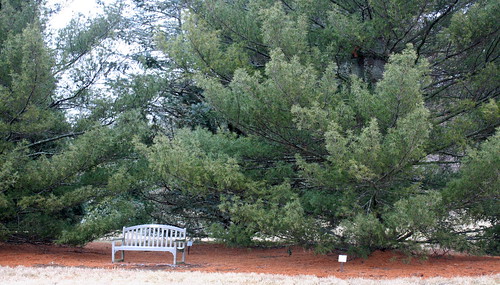
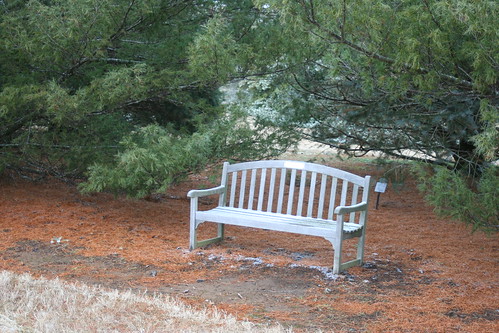
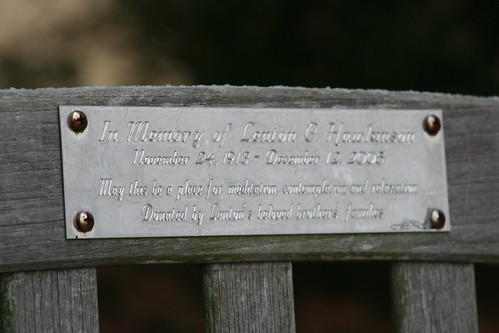

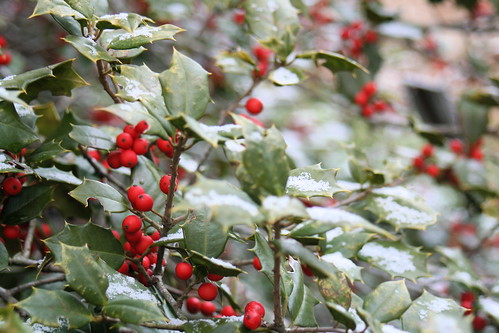
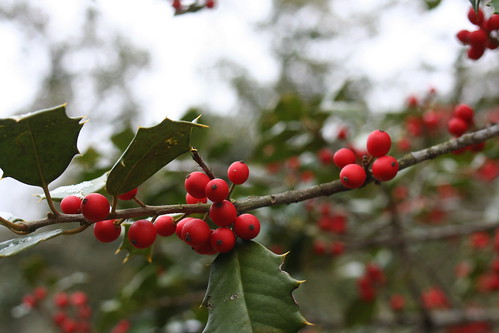
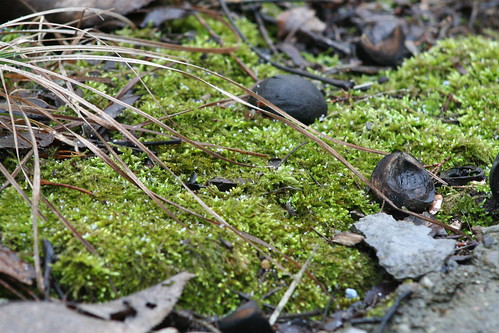

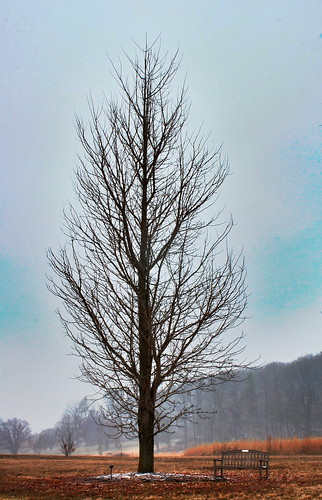
 Posted in:
Posted in: 
